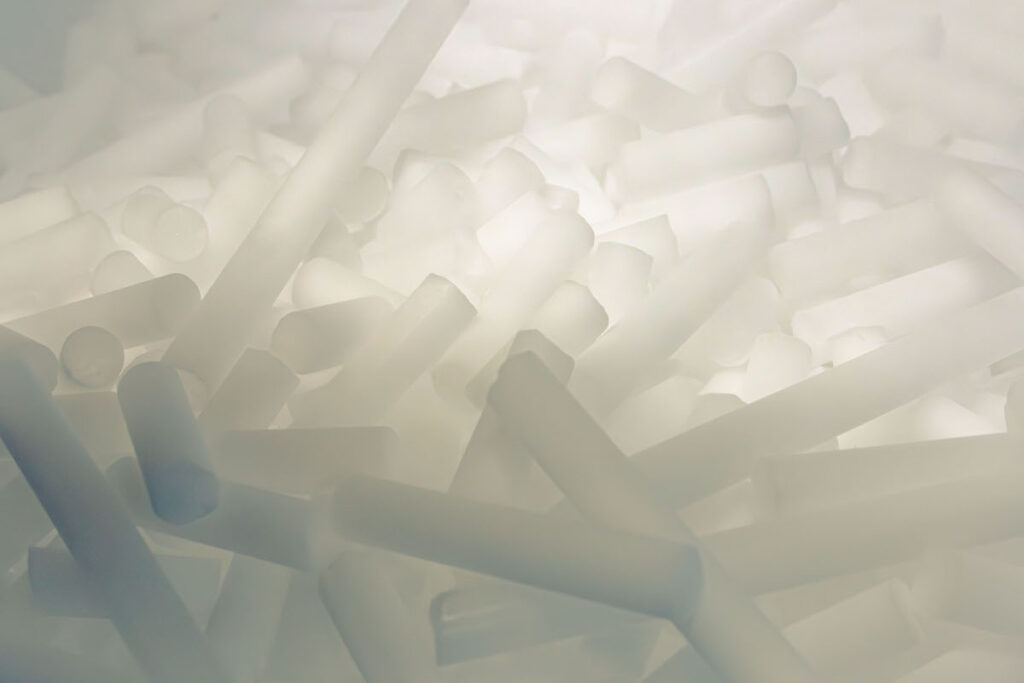

 860-815-8834
860-815-8834


COMPRESSED GAS
ALL-GAS Dry Ice is available for shipping in 50lb packages throughout CT.
5”x5”x2” airline-cut ice blocks will be available soon.
50 lb packages of dry ice pellets and rice are shipped directly from our facility in Hartford, CT.
We ship our dry ice in an insulated box, 2nd day Air AM to guarantee product freshness! Shipping costs are calculated at checkout.
Extra dry ice will be added to your shipment to make up for what sublimates in transit and ensure that you receive the amount ordered. Although the pellets will shrink during shipping and vary in size when received, the total weight will be what you ordered or more.
Box Dimensions are 15.75″ x 15.75″ x 18.5″
Dry ice is frozen carbon dioxide, a normal part of our earth’s atmosphere. It is the gas that we exhale during breathing and the gas that plants use in photosynthesis. It is also the same gas commonly added to water to make soda water. It is particularly useful for freezing, and keeping things frozen because of its very cold temperature: -109.3°F or -78.5°C.
It is widely used because it is simple to freeze and easy to handle using insulated gloves. It changes directly from a solid to a gas -sublimation- in normal atmospheric conditions without going through a wet liquid stage. Therefore, it gets the name “dry ice.”
As a general rule, it will sublimate at a rate of five to ten pounds every 24 hours in a typical ice chest. This sublimation continues from the time of purchase; therefore, pick it up as close to the time needed as possible. Bring an ice chest or some other insulated container to hold it and slow the sublimation rate. It sublimates faster than regular ice melts but will extend the life of regular ice.
It is best not to store it in your freezer because your freezer’s thermostat will shut off the freezer due to its extreme cold! Of course, if the freezer is broken, it will save all your frozen goods.
Commercial shippers of perishables often use dry ice even for non-frozen goods. It gives more than twice the cooling energy per pound of weight and three times the cooling energy per volume than regular water ice (H2O).
It is often mixed with regular ice to save shipping weight and extend the cooling energy of water ice. Sometimes it is made on the spot from liquid CO2. The resulting snow is packed in the top of a shipping container offering extended cooling without electrical refrigeration equipment and connections.
The Safety Data Sheet for Carbon Dioxide, Solid or Dry Ice can be found here.
ALL-GAS offers larger quantities of dry ice packed in 500lb & 1,800lb bins, and delivered by our fleet to all of CT, and some parts of MA, & RI.
For ordering information & pricing give us a call at 860-4DRY-ICE and one of our expert staff members will help guide you through the process.
Safe Handling Practices for Dry Ice
Dry ice (solid carbon dioxide) is an extremely cold material (-109.3°F or -78.5°C) and poses unique hazards if not handled properly. For your safety and to ensure effective use, please follow these guidelines:
By following these safe handling practices, you can safely and effectively use dry ice for your applications. Additional safety information can be found in our dry ice Safety Data Sheet here.
50 lb packages of dry ice pellets and rice are shipped directly from our facility in Hartford, CT.
We ship our dry ice in an insulated box, 2nd day Air AM to guarantee product freshness! Shipping costs are calculated at checkout.
Extra dry ice will be added to your shipment to make up for what sublimates in transit and ensure that you receive the amount ordered. Although the pellets will shrink during shipping and vary in size when received, the total weight will be what you ordered or more.
Box Dimensions are 15.75″ x 15.75″ x 18.5″
Dry ice is frozen carbon dioxide, a normal part of our earth’s atmosphere. It is the gas that we exhale during breathing and the gas that plants use in photosynthesis. It is also the same gas commonly added to water to make soda water. It is particularly useful for freezing, and keeping things frozen because of its very cold temperature: -109.3°F or -78.5°C.
It is widely used because it is simple to freeze and easy to handle using insulated gloves. It changes directly from a solid to a gas -sublimation- in normal atmospheric conditions without going through a wet liquid stage. Therefore, it gets the name “dry ice.”
As a general rule, it will sublimate at a rate of five to ten pounds every 24 hours in a typical ice chest. This sublimation continues from the time of purchase; therefore, pick it up as close to the time needed as possible. Bring an ice chest or some other insulated container to hold it and slow the sublimation rate. It sublimates faster than regular ice melts but will extend the life of regular ice.
It is best not to store it in your freezer because your freezer’s thermostat will shut off the freezer due to its extreme cold! Of course, if the freezer is broken, it will save all your frozen goods.
Commercial shippers of perishables often use dry ice even for non-frozen goods. It gives more than twice the cooling energy per pound of weight and three times the cooling energy per volume than regular water ice (H2O).
It is often mixed with regular ice to save shipping weight and extend the cooling energy of water ice. Sometimes it is made on the spot from liquid CO2. The resulting snow is packed in the top of a shipping container offering extended cooling without electrical refrigeration equipment and connections.
The Safety Data Sheet for Carbon Dioxide, Solid or Dry Ice can be found here.
ALL-GAS offers larger quantities of dry ice packed in 500lb & 1,800lb bins, and delivered by our fleet to all of CT, and some parts of MA, & RI.
For ordering information & pricing give us a call at 860-4DRY-ICE and one of our expert staff members will help guide you through the process.
Safe Handling Practices for Dry Ice
Dry ice (solid carbon dioxide) is an extremely cold material (-109.3°F or -78.5°C) and poses unique hazards if not handled properly. For your safety and to ensure effective use, please follow these guidelines:
By following these safe handling practices, you can safely and effectively use dry ice for your applications. Additional safety information can be found in our dry ice Safety Data Sheet here.
CONTACT US